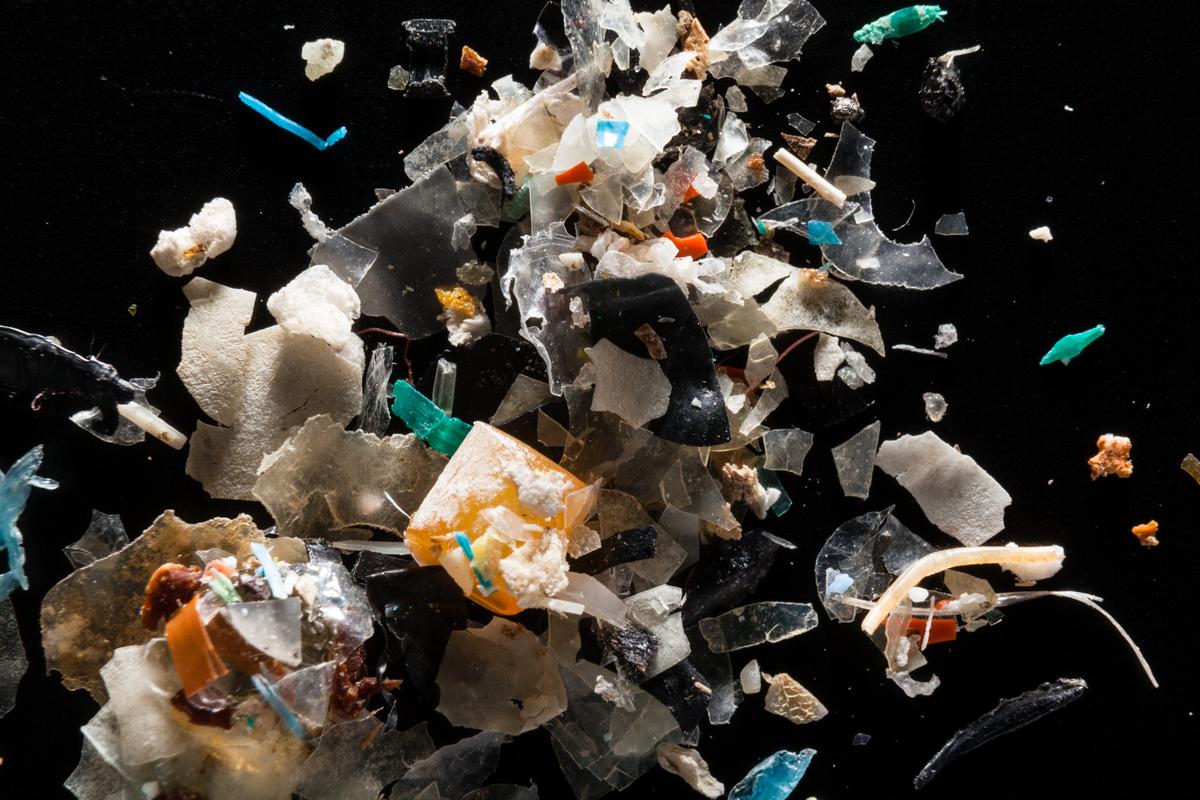
A close-up image of microplastics. Image credit: Chesapeake Bay Program/Flickr.
Using recycled-textile materials may have unintended consequences for Lake Superior. Removing microplastics debris is possible but expensive. While circular textile economies regionally could help solve climate problems, added release of microplastics debris could create another. Two major reuses of textile fibers are in recycled clothing and in geotextiles used in soils that prevent erosion or increase water drainage in poor soil. This project will evaluate the potential for migration of microplastics from recycled textile materials incorporated into new products from laundering of apparel and use of geotextiles for soil erosion control and drainage.
Project description
A solution to one problem creates another problem.
Turning discarded textiles into new products helps eliminate the textiles from landfilling or incineration. Yet, textiles with recycled materials may facilitate greater movement of microplastics into the environment through laundering of clothing or when used directly in the environment as a geotextile - any permeable textile material used to increase soil stability, provide erosion control, or aid in drainage - as compared to freshly manufactured fabrics. Despite growing interest in apparel sustainability and increasing the circular economy and thus reuse of discarded textiles, the project team asserts that there's been little research on this topic.
This project will evaluate the potential for migration of microplastics from recycled textile materials incorporated into new products from laundering of apparel and use of geotextiles for soil erosion control and drainage. The research team will use project outcomes to inform Sea Grant stakeholders of the tradeoffs between the climate change reducing efforts of using circular economy products and the potential for microplastics pollution. Additionally, if increased amount of microplastics are found to come from recycled textiles, recommendations for applications of recycled textiles to reduce microplastic formation and textile recycling processing to reduce microplastic formation will be tailored to specific stakeholder concerns.
Funding
This project is supported by a Minnesota Sea Grant 2023 Fast-Track Grant.
Project team
Principal Investigator:
Melissa Maurer-Jones
Associate Professor
University of Minnesota Duluth
Abigail R. Clarke-Sather
Associate Professor
Mechanical and Industrial Engineering
University of Minnesota Duluth
Lead scientist(s)
Melissa Maurer-Jones
Associate Professor
University of Minnesota Duluth